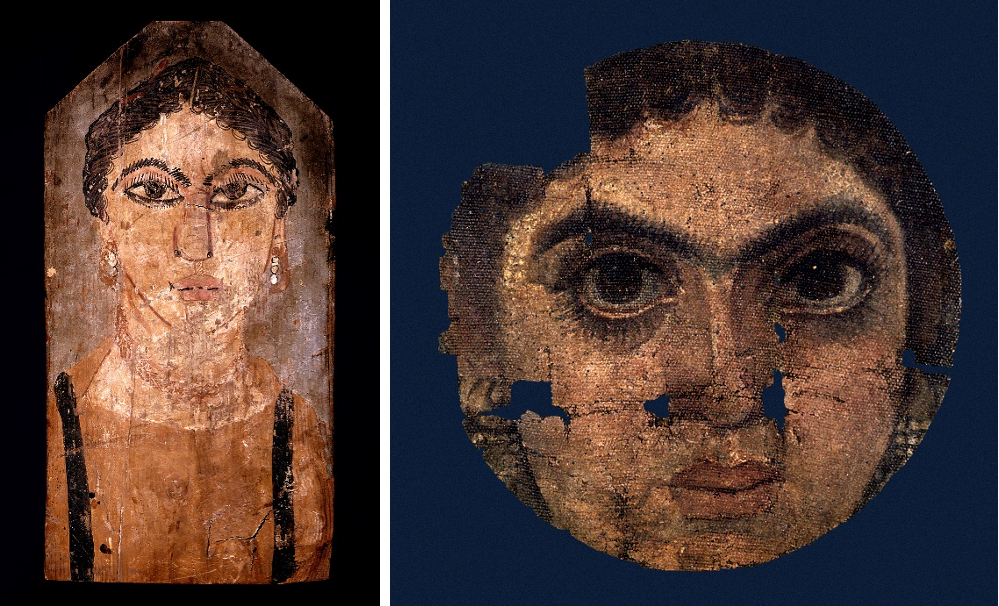The research project Face to Face has the goal to better understand how ancient Egyptian mummy portraits were made, used and deposited in the archaeological record, as well as their ‘secondary’ life after excavation/discovery, by analysing the material and technical properties of these portraits.
Twelve mummy portraits from the collections of the Allard Pierson (Amsterdam, Netherlands), the Sammlung des Ägyptologischen Instituts Universität Heidelberg (Germany), the Musée Royal de Mariemont (Morlanwelz, Belgium), the Museum August Kestner (Hannover, Germany), and the Reiss-Engelhorn-Museen (Mannheim, Germany) will be documented with non-destructive imaging techniques. These techniques include high-resolution visible light photography, UV-photography, and imaging with advanced techniques (MA-XRF and RIS). The purpose of the imaging is:
The twelve portraits have never been studied before and the diverse backgrounds and provenance histories of the objects create a unique research opportunity. It will allow us to collect data in a unified manner from a number of lesser known but nonetheless important mummy portraits that have so far been studied only to a limited extent and certainly not in depth.
This collaborative project draws on (the results of) the international APPEAR project (Ancient Panel Paintings: Examination, Analysis and Research) led by the J. Paul Getty Museum in Los Angeles. The results of the Face to Face project will uploaded to the APPEAR database.

Two mummy portraits from the Allard Pierson collection that will be examined. Left: APM10998, portrait of a woman, 300-400 CE, tempera(?) on wood, height 33.6 cm, possibly from Er-Rubayat. Right: APM08133, portrait of a woman, 300-400 CE, tempera(?) on linen, width 14 cm, possibly Sakkara.